LnRiLWZpZWxke21hcmdpbi1ib3R0b206MC43NmVtfS50Yi1maWVsZC0tbGVmdHt0ZXh0LWFsaWduOmxlZnR9LnRiLWZpZWxkLS1jZW50ZXJ7dGV4dC1hbGlnbjpjZW50ZXJ9LnRiLWZpZWxkLS1yaWdodHt0ZXh0LWFsaWduOnJpZ2h0fS50Yi1maWVsZF9fc2t5cGVfcHJldmlld3twYWRkaW5nOjEwcHggMjBweDtib3JkZXItcmFkaXVzOjNweDtjb2xvcjojZmZmO2JhY2tncm91bmQ6IzAwYWZlZTtkaXNwbGF5OmlubGluZS1ibG9ja311bC5nbGlkZV9fc2xpZGVze21hcmdpbjowfQ==
IEBtZWRpYSBvbmx5IHNjcmVlbiBhbmQgKG1heC13aWR0aDogNzgxcHgpIHsgICB9IEBtZWRpYSBvbmx5IHNjcmVlbiBhbmQgKG1heC13aWR0aDogNTk5cHgpIHsgICB9IA==
Synthetic biology is a subarea of artificial life and genetic engineering that involves the redesign of existing life for new and/or ameliorated purposes, as well as the artificial creation of entirely new living organisms through controlled mutations of organisms’ deoxyribose nucleic acid (DNA). Essentially, in synthetic biology, engineers think about biology as a piece of code that they can tailor to their needs. In the area of artificial life, however, synthetic biology introduces mutations to natural biology to simulate life . The presence of these mutations, coupled with reproductions (that could potentially lead to more mutations) and competition, means that evolution will inevitably occur.
Terminology
CRISPR: A technology used to edit DNA by specifically finding targeted bits of nucleotide sequences inside of a cell
Bioremediation: a branch of biotechnology that employs the use of living organisms, like microbes and bacteria, in the removal of contaminants, pollutants, and toxins from soil, water, and other environments .
Gene construct: an artificially designed segment of DNA that can be used to incorporate genetic material into a target tissue or cell. They contain a DNA insert, called a transgene, delivered via a transformation vector which allows the insert sequence to be replicated and/or expressed in a target cell.
Synthetic Biology vs. Genetic Modification
Through the usage of modeling, simulations, graphic design, and comparisons through experiments, synthetic biology studies and applies the building of artificial biological organisms and systems through the direct modification of said organisms / systems’ genetic codes . Genetic modification, on the other hand, involves the transfer of genes from one cell to another in the hopes of making the new cells better perform at a specific task, or locate the nucleic sequence involved in said task for further research . In contrast to that, synthetic biology essentially artificially reprograms an organism’s DNA to make a new, improved organism.
History
Genetic Engineering
An overview of this history is available in .
- 1970-1980s: emergence of genetic engineering for environmental purposes, such as bioremediation, bacterium able to consume petroleum is developed
- 2004: Invention of a new “multiplex” DNA synthesis technique that reduced the cost of DNA synthesis to 20,000 base-pairs per dollar.
- 2006: Re-engineering of a yeast containing bacterial and wormwood genes to produce a precursor to artemisinin for use as an inexpensive anti-malarial drug.
- 2007: Development of a genome transplantation methods to transform one type of bacteria into another type dictated by the transplanted chromosome
- 2008: Creation of the first synthetic bacterial genome, Mycoplasma Genitalium JCVI-1.0, representing the largest man-made DNA structure by converting a digitized DNA sequence, stored in a computer file, into a living entity capable of growth and self replication .
- 2010: Announcement of the world’s first synthetic life form.
Challenges
With the complexities and intricacies of synthetic biology, challenges can be seen in several areas. One of the main ones simply arises from our lack of knowledge in how certain genes express themselves in living systems. In fact, often, organisms made through synthetic biology with precisely defined genetic constructs end up having said construct not perform as intended in living systems due to their variability and complexity as it can be very complicated to synthetically engineer a target product with all of its complexities.
With that in mind, another challenge comes when attempting to make newly made organisms perform in a manner that keeps the living system they are injected in alive and relatively functional through pre-defined fitness functions with synthetic biology. In theory, genetic systems can function in a host cell for minutes to days before the system becomes nonfunctional. That said, a question and challenge often ends up being how the development of mechanisms with synthetically engineered organisms can be made to allow for the sustained functioning of genetic constructs over time, giving ample time for researchers and programmers to explore the effects of newly injected DNA strands .
Concerns
Despite the approval of synthetic biology by the scientific community, many find concerns within the field . Technology is often deemed as a force multiplier, and with its progressive advancements and accessibility, there is a growing concern that synthetic biology could be used against humans. With experiments and research through artificial life and synthetic biology, the genetic manipulation of viruses and bacterias is very doable . A perfect example can be seen with the H5N1 flu virus (which kills 60% of the people it infects) that, at first, was very non-contagious. However, through synthetic biology, researchers have edited its genome to make it as deadly but extremely contagious . Very simple biohacks could expose genomes such as this one in the hands of the wrong individuals, and with DNA printers and CRISPR technology being provided in numerous places throughout the world (high schools, even), this concern is very much warranted.
Nevertheless, there are numerous rules in place to prevent such a doomsday scenario from happening. Indeed, the public is welcomed and encouraged to participate in ethical discussions regarding Synthetic biology’s advances. It is precisely this technology that will bring cleaner industrial and medical processes/products, like biofuels, biodegradables, biodetoxification agents, biotherapeutics, biodetectors and even biocomputers/DNA storage devices. These technologies (e.g. CRISPR) have the potential to make antibiotics obsolete and could put an end to many diseases.
Citations
{4204406:DK3QE9UZ};{4204406:DK3QE9UZ};{4204406:ZMMVJKBK};{4204406:5RWPWY6K};{4204406:5RWPWY6K};{4204406:DK3QE9UZ};{4204406:FVMCJTKK};{4204406:5RWPWY6K};{4204406:5RWPWY6K};{4204406:2EUHUQEH};{4204406:2EUHUQEH};{4204406:2EUHUQEH} apa default asc no 3534 %7B%22status%22%3A%22success%22%2C%22updateneeded%22%3Afalse%2C%22instance%22%3A%22zotpress-786564071d2195d7dac73e81ece3e624%22%2C%22meta%22%3A%7B%22request_last%22%3A0%2C%22request_next%22%3A0%2C%22used_cache%22%3Atrue%7D%2C%22data%22%3A%5B%7B%22key%22%3A%22DK3QE9UZ%22%2C%22library%22%3A%7B%22id%22%3A4204406%7D%2C%22meta%22%3A%7B%22lastModifiedByUser%22%3A%7B%22id%22%3A7309051%2C%22username%22%3A%22imytk%22%2C%22name%22%3A%22%22%2C%22links%22%3A%7B%22alternate%22%3A%7B%22href%22%3A%22https%3A%5C%2F%5C%2Fwww.zotero.org%5C%2Fimytk%22%2C%22type%22%3A%22text%5C%2Fhtml%22%7D%7D%7D%2C%22creatorSummary%22%3A%22Synthetic%20Biology%20Explained%22%2C%22parsedDate%22%3A%222010%22%2C%22numChildren%22%3A0%7D%2C%22bib%22%3A%22%3Cdiv%20class%3D%5C%22csl-bib-body%5C%22%20style%3D%5C%22line-height%3A%202%3B%20padding-left%3A%201em%3B%20text-indent%3A-1em%3B%5C%22%3E%5Cn%20%20%3Cdiv%20class%3D%5C%22csl-entry%5C%22%3ESynthetic%20Biology%20Explained.%20%282010%29.%20%3Ci%3ESynthetic%20Biology%20Explained%3C%5C%2Fi%3E.%20BIO.%20%3Ca%20href%3D%27https%3A%5C%2F%5C%2Fwww.bio.org%5C%2Farticles%5C%2Fsynthetic-biology-explained%27%3Ehttps%3A%5C%2F%5C%2Fwww.bio.org%5C%2Farticles%5C%2Fsynthetic-biology-explained%3C%5C%2Fa%3E%3C%5C%2Fdiv%3E%5Cn%3C%5C%2Fdiv%3E%22%2C%22data%22%3A%7B%22itemType%22%3A%22webpage%22%2C%22title%22%3A%22Synthetic%20Biology%20Explained%22%2C%22creators%22%3A%5B%7B%22creatorType%22%3A%22author%22%2C%22firstName%22%3A%22%22%2C%22lastName%22%3A%22Synthetic%20Biology%20Explained%22%7D%5D%2C%22abstractNote%22%3A%22Synthetic%20biology%20is%20a%20new%20interdisciplinary%20area%20that%20involves%20the%20application%20of%5Cu00a0engineering%20principles%20to%20biology.%20It%20aims%20at%20the%20%28re-%29design%20and%20fabrication%20of%20biological%5Cu00a0components%20and%20systems%20that%20do%20not%20already%20exist%20in%20the%20natural%20world.%5Cu00a0Synthetic%20biology%20combines%20chemical%20synthesis%20of%20DNA%20with%20growing%20knowledge%20of%5Cu00a0genomics%20to%20enable%20researchers%20to%20quickly%20manufacture%20catalogued%20DNA%20sequences%20andassemble%20them%20into%20new%20genomes.%22%2C%22date%22%3A%222010%22%2C%22url%22%3A%22https%3A%5C%2F%5C%2Fwww.bio.org%5C%2Farticles%5C%2Fsynthetic-biology-explained%22%2C%22language%22%3A%22en%22%2C%22collections%22%3A%5B%5D%2C%22dateModified%22%3A%222023-07-28T06%3A00%3A09Z%22%7D%7D%2C%7B%22key%22%3A%22FVMCJTKK%22%2C%22library%22%3A%7B%22id%22%3A4204406%7D%2C%22meta%22%3A%7B%22lastModifiedByUser%22%3A%7B%22id%22%3A7309051%2C%22username%22%3A%22imytk%22%2C%22name%22%3A%22%22%2C%22links%22%3A%7B%22alternate%22%3A%7B%22href%22%3A%22https%3A%5C%2F%5C%2Fwww.zotero.org%5C%2Fimytk%22%2C%22type%22%3A%22text%5C%2Fhtml%22%7D%7D%7D%2C%22creatorSummary%22%3A%22Sleator%22%2C%22parsedDate%22%3A%222010%22%2C%22numChildren%22%3A0%7D%2C%22bib%22%3A%22%3Cdiv%20class%3D%5C%22csl-bib-body%5C%22%20style%3D%5C%22line-height%3A%202%3B%20padding-left%3A%201em%3B%20text-indent%3A-1em%3B%5C%22%3E%5Cn%20%20%3Cdiv%20class%3D%5C%22csl-entry%5C%22%3ESleator%2C%20R.%20D.%20%282010%29.%20The%20story%20of%20%3Ci%3EMycoplasma%20mycoides%3C%5C%2Fi%3E%20JCVI-syn1.0%3A%20The%20forty%20million%20dollar%20microbe.%20%3Ci%3EBioengineered%20Bugs%3C%5C%2Fi%3E%2C%20%3Ci%3E1%3C%5C%2Fi%3E%284%29%2C%20231%26%23×2013%3B232.%20%3Ca%20href%3D%27https%3A%5C%2F%5C%2Fdoi.org%5C%2F10.4161%5C%2Fbbug.1.4.12465%27%3Ehttps%3A%5C%2F%5C%2Fdoi.org%5C%2F10.4161%5C%2Fbbug.1.4.12465%3C%5C%2Fa%3E%3C%5C%2Fdiv%3E%5Cn%3C%5C%2Fdiv%3E%22%2C%22data%22%3A%7B%22itemType%22%3A%22journalArticle%22%2C%22title%22%3A%22The%20story%20of%20%3Ci%3EMycoplasma%20mycoides%3C%5C%2Fi%3E%20JCVI-syn1.0%3A%20The%20forty%20million%20dollar%20microbe%22%2C%22creators%22%3A%5B%7B%22creatorType%22%3A%22author%22%2C%22firstName%22%3A%22Roy%20D%22%2C%22lastName%22%3A%22Sleator%22%7D%5D%2C%22abstractNote%22%3A%22%22%2C%22date%22%3A%2207%5C%2F2010%22%2C%22language%22%3A%22en%22%2C%22DOI%22%3A%2210.4161%5C%2Fbbug.1.4.12465%22%2C%22ISSN%22%3A%221949-1018%2C%201949-1026%22%2C%22url%22%3A%22http%3A%5C%2F%5C%2Fwww.tandfonline.com%5C%2Fdoi%5C%2Fabs%5C%2F10.4161%5C%2Fbbug.1.4.12465%22%2C%22collections%22%3A%5B%5D%2C%22dateModified%22%3A%222023-07-28T06%3A00%3A09Z%22%7D%7D%2C%7B%22key%22%3A%222EUHUQEH%22%2C%22library%22%3A%7B%22id%22%3A4204406%7D%2C%22meta%22%3A%7B%22lastModifiedByUser%22%3A%7B%22id%22%3A7309051%2C%22username%22%3A%22imytk%22%2C%22name%22%3A%22%22%2C%22links%22%3A%7B%22alternate%22%3A%7B%22href%22%3A%22https%3A%5C%2F%5C%2Fwww.zotero.org%5C%2Fimytk%22%2C%22type%22%3A%22text%5C%2Fhtml%22%7D%7D%7D%2C%22creatorSummary%22%3A%22Reid%22%2C%22parsedDate%22%3A%222019%22%2C%22numChildren%22%3A0%7D%2C%22bib%22%3A%22%3Cdiv%20class%3D%5C%22csl-bib-body%5C%22%20style%3D%5C%22line-height%3A%202%3B%20padding-left%3A%201em%3B%20text-indent%3A-1em%3B%5C%22%3E%5Cn%20%20%3Cdiv%20class%3D%5C%22csl-entry%5C%22%3EReid%2C%20B.%20%282019%29.%20%3Ci%3EHow%20synthetic%20biology%20could%20wipe%20out%20humanity%20–%20and%20how%20we%20can%20stop%20it%20%7C%20Rob%20Reid%3C%5C%2Fi%3E%20%5BYoutube%20Video%5D.%20%3Ca%20href%3D%27https%3A%5C%2F%5C%2Fwww.youtube.com%5C%2Fwatch%3Fv%3D8DDgHq9ewOo%27%3Ehttps%3A%5C%2F%5C%2Fwww.youtube.com%5C%2Fwatch%3Fv%3D8DDgHq9ewOo%3C%5C%2Fa%3E%3C%5C%2Fdiv%3E%5Cn%3C%5C%2Fdiv%3E%22%2C%22data%22%3A%7B%22itemType%22%3A%22videoRecording%22%2C%22title%22%3A%22How%20synthetic%20biology%20could%20wipe%20out%20humanity%20–%20and%20how%20we%20can%20stop%20it%20%7C%20Rob%20Reid%22%2C%22creators%22%3A%5B%7B%22creatorType%22%3A%22director%22%2C%22firstName%22%3A%22Bob%22%2C%22lastName%22%3A%22Reid%22%7D%5D%2C%22abstractNote%22%3A%22The%20world-changing%20promise%20of%20synthetic%20biology%20and%20gene%20editing%20has%20a%20dark%20side.%20In%20this%20far-seeing%20talk%2C%20author%20and%20entrepreneur%20Rob%20Reid%20reviews%20the%20risks…%22%2C%22videoRecordingFormat%22%3A%22Youtube%20Video%22%2C%22studio%22%3A%22%22%2C%22date%22%3A%222019%22%2C%22runningTime%22%3A%22%22%2C%22language%22%3A%22en%22%2C%22ISBN%22%3A%22%22%2C%22url%22%3A%22https%3A%5C%2F%5C%2Fwww.youtube.com%5C%2Fwatch%3Fv%3D8DDgHq9ewOo%22%2C%22collections%22%3A%5B%5D%2C%22dateModified%22%3A%222023-07-28T06%3A00%3A09Z%22%7D%7D%2C%7B%22key%22%3A%225RWPWY6K%22%2C%22library%22%3A%7B%22id%22%3A4204406%7D%2C%22meta%22%3A%7B%22lastModifiedByUser%22%3A%7B%22id%22%3A7309051%2C%22username%22%3A%22imytk%22%2C%22name%22%3A%22%22%2C%22links%22%3A%7B%22alternate%22%3A%7B%22href%22%3A%22https%3A%5C%2F%5C%2Fwww.zotero.org%5C%2Fimytk%22%2C%22type%22%3A%22text%5C%2Fhtml%22%7D%7D%7D%2C%22creatorSummary%22%3A%22Hanczyc%22%2C%22parsedDate%22%3A%222020%22%2C%22numChildren%22%3A0%7D%2C%22bib%22%3A%22%3Cdiv%20class%3D%5C%22csl-bib-body%5C%22%20style%3D%5C%22line-height%3A%202%3B%20padding-left%3A%201em%3B%20text-indent%3A-1em%3B%5C%22%3E%5Cn%20%20%3Cdiv%20class%3D%5C%22csl-entry%5C%22%3EHanczyc%2C%20M.%20M.%20%282020%29.%20Engineering%20Life%3A%20A%20Review%20of%20Synthetic%20Biology.%20%3Ci%3EArtificial%20Life%3C%5C%2Fi%3E%2C%20%3Ci%3E26%3C%5C%2Fi%3E%282%29%2C%20260%26%23×2013%3B273.%20%3Ca%20href%3D%27https%3A%5C%2F%5C%2Fdoi.org%5C%2F10.1162%5C%2Fartl_a_00318%27%3Ehttps%3A%5C%2F%5C%2Fdoi.org%5C%2F10.1162%5C%2Fartl_a_00318%3C%5C%2Fa%3E%3C%5C%2Fdiv%3E%5Cn%3C%5C%2Fdiv%3E%22%2C%22data%22%3A%7B%22itemType%22%3A%22journalArticle%22%2C%22title%22%3A%22Engineering%20Life%3A%20A%20Review%20of%20Synthetic%20Biology%22%2C%22creators%22%3A%5B%7B%22creatorType%22%3A%22author%22%2C%22firstName%22%3A%22Martin%20M.%22%2C%22lastName%22%3A%22Hanczyc%22%7D%5D%2C%22abstractNote%22%3A%22Synthetic%20biology%20is%20a%20field%20of%20scientific%20research%20that%20applies%20engineering%20principles%20to%20living%20organisms%20and%20living%20systems.%20It%20is%20a%20field%20that%20is%20increasing%20in%20scope%20with%20respect%20to%20organisms%20engineered%2C%20practical%20outcomes%2C%20and%20systems%20integration.%20There%20is%20a%20commercial%20dimension%20as%20well%2C%20where%20living%20organisms%20are%20engineered%20as%20green%20technologies%20that%20could%20offer%20alternatives%20to%20industrial%20standards%20in%20the%20pharmaceutical%20and%20petroleum-based%20chemical%20industries.%20This%20review%20attempts%20to%20provide%20an%20introduction%20to%20this%20field%20as%20well%20as%20a%20consideration%20of%20important%20contributions%20that%20exemplify%20how%20synthetic%20biology%20may%20be%20commensurate%20or%20even%20disproportionate%20with%20the%20complexity%20of%20living%20systems.%20The%20engineerability%20of%20living%20systems%20remains%20a%20difficult%20task%2C%20yet%20advancements%20are%20reported%20at%20an%20ever-increasing%20pace.%22%2C%22date%22%3A%2205%5C%2F2020%22%2C%22language%22%3A%22en%22%2C%22DOI%22%3A%2210.1162%5C%2Fartl_a_00318%22%2C%22ISSN%22%3A%221064-5462%2C%201530-9185%22%2C%22url%22%3A%22https%3A%5C%2F%5C%2Fdirect.mit.edu%5C%2Fartl%5C%2Farticle%5C%2F26%5C%2F2%5C%2F260-273%5C%2F93249%22%2C%22collections%22%3A%5B%5D%2C%22dateModified%22%3A%222023-07-28T06%3A00%3A09Z%22%7D%7D%2C%7B%22key%22%3A%22ZMMVJKBK%22%2C%22library%22%3A%7B%22id%22%3A4204406%7D%2C%22meta%22%3A%7B%22lastModifiedByUser%22%3A%7B%22id%22%3A7309051%2C%22username%22%3A%22imytk%22%2C%22name%22%3A%22%22%2C%22links%22%3A%7B%22alternate%22%3A%7B%22href%22%3A%22https%3A%5C%2F%5C%2Fwww.zotero.org%5C%2Fimytk%22%2C%22type%22%3A%22text%5C%2Fhtml%22%7D%7D%7D%2C%22creatorSummary%22%3A%22Mitchell%22%2C%22parsedDate%22%3A%222019%22%2C%22numChildren%22%3A0%7D%2C%22bib%22%3A%22%3Cdiv%20class%3D%5C%22csl-bib-body%5C%22%20style%3D%5C%22line-height%3A%202%3B%20padding-left%3A%201em%3B%20text-indent%3A-1em%3B%5C%22%3E%5Cn%20%20%3Cdiv%20class%3D%5C%22csl-entry%5C%22%3EMitchell%2C%20C.%20%282019%29.%20%3Ci%3EWhat%20Is%20Bioremediation%2C%20and%20How%20Does%20It%20Work%20%28With%20Examples%29%3F%3C%5C%2Fi%3E%20Investopedia.%20%3Ca%20href%3D%27https%3A%5C%2F%5C%2Fwww.investopedia.com%5C%2Fterms%5C%2Fb%5C%2Fbioremediation.asp%27%3Ehttps%3A%5C%2F%5C%2Fwww.investopedia.com%5C%2Fterms%5C%2Fb%5C%2Fbioremediation.asp%3C%5C%2Fa%3E%3C%5C%2Fdiv%3E%5Cn%3C%5C%2Fdiv%3E%22%2C%22data%22%3A%7B%22itemType%22%3A%22webpage%22%2C%22title%22%3A%22What%20Is%20Bioremediation%2C%20and%20How%20Does%20It%20Work%20%28With%20Examples%29%3F%22%2C%22creators%22%3A%5B%7B%22creatorType%22%3A%22author%22%2C%22firstName%22%3A%22Cory%22%2C%22lastName%22%3A%22Mitchell%22%7D%5D%2C%22abstractNote%22%3A%22Bioremediation%20is%20the%20use%20of%20living%20organisms%2C%20such%20as%20microbes%20and%20bacteria%2C%20to%20remove%20contaminants%2C%20pollutants%2C%20and%20toxins%20from%20soil%20and%20water.%22%2C%22date%22%3A%222019%22%2C%22url%22%3A%22https%3A%5C%2F%5C%2Fwww.investopedia.com%5C%2Fterms%5C%2Fb%5C%2Fbioremediation.asp%22%2C%22language%22%3A%22en%22%2C%22collections%22%3A%5B%5D%2C%22dateModified%22%3A%222023-07-28T06%3A00%3A08Z%22%7D%7D%5D%7DSynthetic Biology Explained. (2010).
Synthetic Biology Explained. BIO.
https://www.bio.org/articles/synthetic-biology-explainedSleator, R. D. (2010). The story of
Mycoplasma mycoides JCVI-syn1.0: The forty million dollar microbe.
Bioengineered Bugs,
1(4), 231–232.
https://doi.org/10.4161/bbug.1.4.12465Reid, B. (2019).
How synthetic biology could wipe out humanity — and how we can stop it | Rob Reid [Youtube Video].
https://www.youtube.com/watch?v=8DDgHq9ewOoHanczyc, M. M. (2020). Engineering Life: A Review of Synthetic Biology.
Artificial Life,
26(2), 260–273.
https://doi.org/10.1162/artl_a_00318Mitchell, C. (2019).
What Is Bioremediation, and How Does It Work (With Examples)? Investopedia.
https://www.investopedia.com/terms/b/bioremediation.asp 